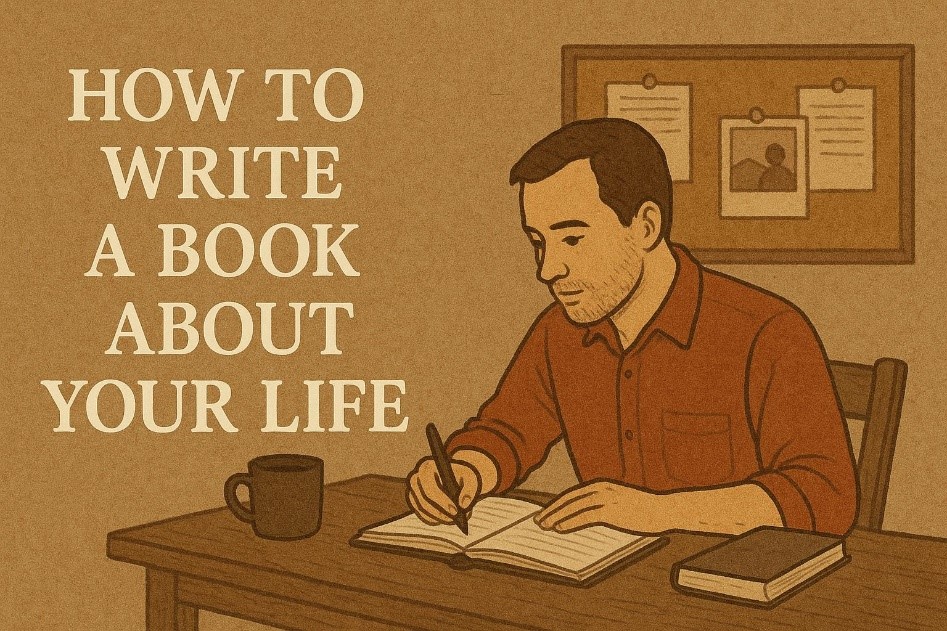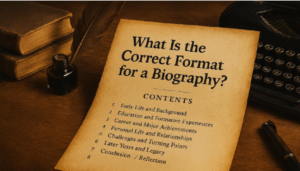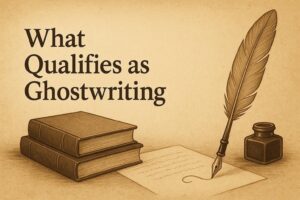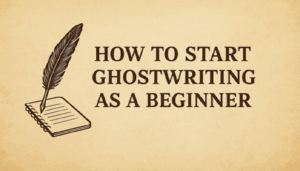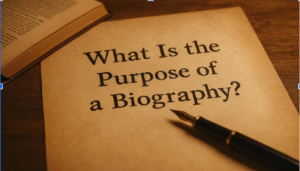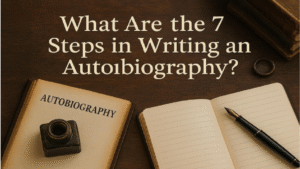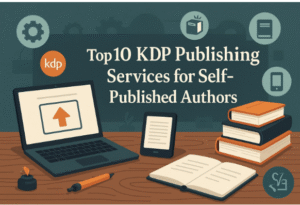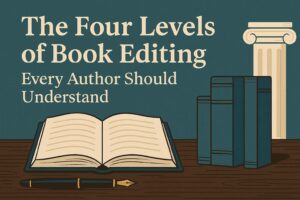Thinking about turning your life into a book? Learn how to write a book about your life with this clear step-by-step guide. Explore the differences between memoirs, biographies, and personal essays, and discover tools to bring your story to life.
Introduction
You’ve probably thought about it before. Maybe after a big life event. Maybe after someone said, “You should write a book.” Then the doubt crept in: Who would read it? Where do I even start? The truth is, everyone has a story worth telling. Yes, even you.
Your story isn’t just a list of dates and events. It’s the meaning behind them. It’s the moments that shaped you, the struggles that taught you, the victories that lit you up. Writing it down is more than an act of memory. It’s a way to heal, inspire, and leave something that lasts.
If you’ve been wondering how to write a book about your life, this guide will give you the clarity and courage to begin. You’ll see that writing doesn’t have to be overwhelming. It can be one of the most rewarding journeys you ever take.
Memoir, Biography, or Personal Essay – What’s the Difference?
Before you begin shaping your life into a book, it helps to know what kind of book you’re actually writing. This decision sets the tone, the structure, and even the audience you’re speaking to. Many people start out thinking they must write a full biography, when in fact their story might be more powerful as a memoir or even as a series of personal essays. Let’s break it down.
Memoir
A memoir zooms in. Instead of covering every single chapter of your life, it focuses on themes. Maybe it is your journey through grief, your career reinvention, or the way you found your sense of identity. A memoir is about emotional truth more than exhaustive detail. Readers connect because they see reflections of their own struggles and triumphs in your experiences. Think of it as holding up a mirror, not writing an encyclopedia.
Biography
A biography is the big picture. It usually begins at the start of a life and carries through to the present or even beyond, if someone else is writing it after the subject has passed. Biographies often rely heavily on research, interviews, and documentation. They aim for accuracy, context, and a balanced perspective. If you’re considering writing your biography, be prepared for a more comprehensive project that requires fact-checking and objectivity.
Personal Essay
A personal essay is the most flexible form. It’s short, sharp, and intimate. Instead of telling your whole life, you take one moment and explore it deeply. Maybe it’s the day you left home, a conversation that changed you, or a quiet realization that shifted everything. Personal essays often close with insight or reflection, giving readers a glimpse into your inner world without asking them to commit to a full-length book.
Choosing What Fits
Ask yourself: do you want to capture a lifetime, a theme, or a moment? Each choice is valid, and none is better than the other. The real question is what feels right for your story. Once you’ve decided, the path forward becomes clearer.
Step-by-Step Writing Process
So, you’ve decided you’re ready. You’re standing at the edge of the page, staring at the blank space, and asking yourself: How do I turn all these experiences, feelings, and memories into a book? Writing about your life and wondering how to write a book about your life is both a practical process and an emotional one. It’s not just about structure; it’s about courage, discipline, and clarity. To make the journey less overwhelming, let’s break it into steps. Think of these as mile markers on a long road. Each one moves you forward until, suddenly, you realize you’ve written a book that captures your story in a way you never thought possible.
Step 1: Define Your Purpose
Before you write a single scene, pause. Ask yourself: Why am I doing this?
Maybe it’s because you want to leave something behind for your family. Maybe you want to share lessons you’ve learned so others don’t have to stumble the same way. Perhaps you feel a pull to explore your own journey, to make sense of it, to find healing through reflection. Or maybe it’s creative ambition: you love the idea of seeing your book on a shelf, of becoming part of the literary conversation.
Purpose matters because it shapes tone and direction. A memoir written for healing will look very different from one written to inspire. A biography meant for grandchildren will sound different from one meant for the general public. Without a clear purpose, you’ll lose steam halfway through. With purpose, every page you write feels meaningful.
Try writing it down in one sentence: I am writing this book because… This becomes your compass whenever doubt creeps in.
Step 2: Choose a Central Theme or Message
Your life is vast, full of twists and turns. You can’t write it all in detail, and even if you could, it wouldn’t necessarily be engaging. What makes a life story powerful is focus.
Ask yourself: What is my story really about?
Maybe it’s resilience. Maybe it’s forgiveness. Maybe it’s the pursuit of identity. Once you choose a theme, your experiences become threads you weave into a tapestry. Instead of overwhelming readers with everything, you guide them through one meaningful lens.
For example:
- If your theme is resilience, you highlight the moments where you fell and stood up again.
- If your theme is finding identity, you focus on the relationships, turning points, and discoveries that shaped you.
- If your theme is grief, you bring readers into the moments of loss and healing that changed you.
Theme is the difference between a diary and a book. It gives your story weight and cohesion.
Step 3: Gather Your Material
This is where you dig into the attic of your life. Collect the fragments, the scraps, the pieces that will later become your narrative.
- Journal prompts help jog your memory. Try starting with phrases like: “I remember…”, “The moment I realized…”, “If I could tell my younger self one thing…”
- Photos, letters, and emails can spark details you might otherwise forget. A single photograph can bring back the smell of a room, the sound of laughter, the sting of an argument.
- Old diaries are gold. Even if they feel cringeworthy, they preserve the raw voice of your past self.
- Conversations with family and friends can fill in gaps. Ask them about how they remember certain moments. Often, their version of events surprises you, offering new perspectives.
Think of this stage like gathering clay. You don’t need to shape it yet. Just collect it. Later, you’ll mold it into story.
Step 4: Create a Rough Timeline or Chapter Map
Once you’ve gathered material, it’s time to put some order to the chaos.
Start by sketching a loose timeline. You don’t need to write down every date. Focus instead on periods of your life or themes. Maybe your map looks like: Childhood → College → First Job → Heartbreak → Reinvention. Or maybe it’s thematic: Struggles with Identity → Relationships → Career Shifts → Personal Growth.
Remember: you don’t have to write in strict chronology. Sometimes a non-linear structure is more powerful, weaving past and present together to highlight meaning. Think about your emotional arc as much as your life arc.
There are fantastic tools to help you in writing your biography. Scrivener lets you organize chapters like index cards on a board. Milanote or Trello let you visually drag and drop events, giving you flexibility to experiment with structure.
At this stage, don’t overthink. The point is not perfection. The point is to create a skeleton so you’re not writing blindly.
Step 5: Start Writing Scenes
Here’s where the magic happens. Instead of telling readers what happened, you show them.
Don’t write: I was sad when I lost my job.
Write: I sat in the parking lot staring at the cardboard box of my belongings. The stapler, the framed photo, the coffee mug. My throat felt tight, like swallowing glass.
Scenes are what bring your life to life. They make readers feel, not just understand.
Tips for writing strong scenes:
- Start with a vivid moment. It doesn’t have to be your childhood. It might be the turning point in your forties when everything shifted.
- Use dialogue. Recreate conversations that mattered, even if you polish the words later.
- Anchor with sensory detail. What did the room smell like? How did the air feel?
- Show emotions through action. Instead of “I was angry,” describe how you slammed the door, how your hands shook.
Scenes create intimacy. They invite readers into your memory, letting them walk beside you.
Step 6: Build Momentum with Drafting Tools
Momentum is everything. Once you start, you need to keep moving. Otherwise self-doubt and procrastination creep in.
Set small goals. Five hundred words a day. One scene a week. Celebrate every milestone.
Modern tools can help:
- Scrivener for managing large projects.
- Grammarly or ProWritingAid for polishing grammar and style.
- Hemingway Editor for making your writing bold and clear.
- Google Docs or Word with cloud backup for accessibility anywhere.
- Dabble or 4thewords to gamify word counts and stay consistent.
Remember: the first draft is supposed to be messy. Don’t worry about polish yet. The goal is momentum.
Step 7: Revisit, Reflect, and Revise
Once you’ve drafted, resist the urge to edit immediately. Let your manuscript rest. Walk away for a week or two. When you return, you’ll see it with new eyes.
Revision is where you deepen clarity. Ask:
- Does the story reflect my theme?
- Are there parts that feel repetitive or irrelevant?
- Do the scenes flow naturally?
- Is the emotion clear?
Cut what doesn’t serve. Reorder if needed. Sometimes the chapter you wrote as number five belongs as your opener. Don’t be afraid to reshape.
Editing is not punishment. It’s refinement. It’s where your raw story becomes art.
Step 8: Seek Feedback
At some point, you need other eyes. Writing is intimate, but readers will eventually engage with your story. It helps to test how it lands.
Share with trusted beta readers or writing groups. Ask specific questions:
- Was any part confusing?
- Did you feel the emotion here?
- Did the pacing hold your attention?
If you want more professional guidance, consider hiring an editor. A developmental editor helps shape structure and clarity. A copy editor focuses on grammar and consistency.
This is also where biography writing services can help if you feel you need structured support or even a collaborator to bring your story to life. These services range from coaching to full ghostwriting services, depending on how hands-on you want to be.
Feedback can sting, but remember: it’s about making the story stronger, not diminishing your voice.
Step 9: Decide How to Publish
Once your manuscript feels solid, it’s time to think about the next step: sharing it.
You have three main routes:
- Self-publishing. You maintain full control, keep your royalties, and publish on platforms like Amazon KDP or Draft2Digital. It’s faster and more flexible, but requires you to handle editing, design, and marketing.
- Traditional publishing. This usually involves writing a book proposal and sending query letters to agents or publishers. It can take longer and be more competitive, but offers broader distribution and professional support.
- Hybrid publishing. A blend of both, where you pay for certain services but keep more control than in traditional publishing.
Whichever path you choose, remember: publishing is optional. Writing itself is already a triumph.
Deepening the Process: Emotional Truth
While the steps above give you a clear structure, there’s a deeper layer to writing about your life: emotional truth.
Facts matter, yes, but what resonates with readers is honesty. They connect when you peel back the surface and let them see the raw parts. Vulnerability is what transforms writing from information into impact.
When you’re tempted to hide behind vague words, push yourself to be more specific. Instead of “I felt bad,” write what that badness looked like. Tears that wouldn’t stop. Sleepless nights staring at the ceiling. The numbness that scared you more than the pain.
This honesty doesn’t mean you need to share everything. It means the parts you choose to share should feel real.
Practical Advice to Keep Going
- Set a routine. Whether it’s mornings with coffee or evenings before bed, consistency builds habit.
- Break it into chunks. Don’t think “I have to write 70,000 words.” Think “I’ll write one scene today.”
- Reward yourself. A chapter finished? Treat yourself. Motivation grows with celebration.
- Expect resistance. Some days, words won’t come. Sit there anyway. Even bad writing can be edited later.
- Keep perspective. Writing a book is a marathon, not a sprint. Allow yourself rest.
Common Pitfalls to Avoid
- Trying to be perfect too soon. First drafts are supposed to be rough.
- Overloading with facts. Readers connect with emotions more than lists of events.
- Writing for others before writing for yourself. First, write the story you need to tell. Later, shape it for readers.
- Ignoring your own limits. If revisiting certain memories feels too raw, step back. You can return later when you’re ready.
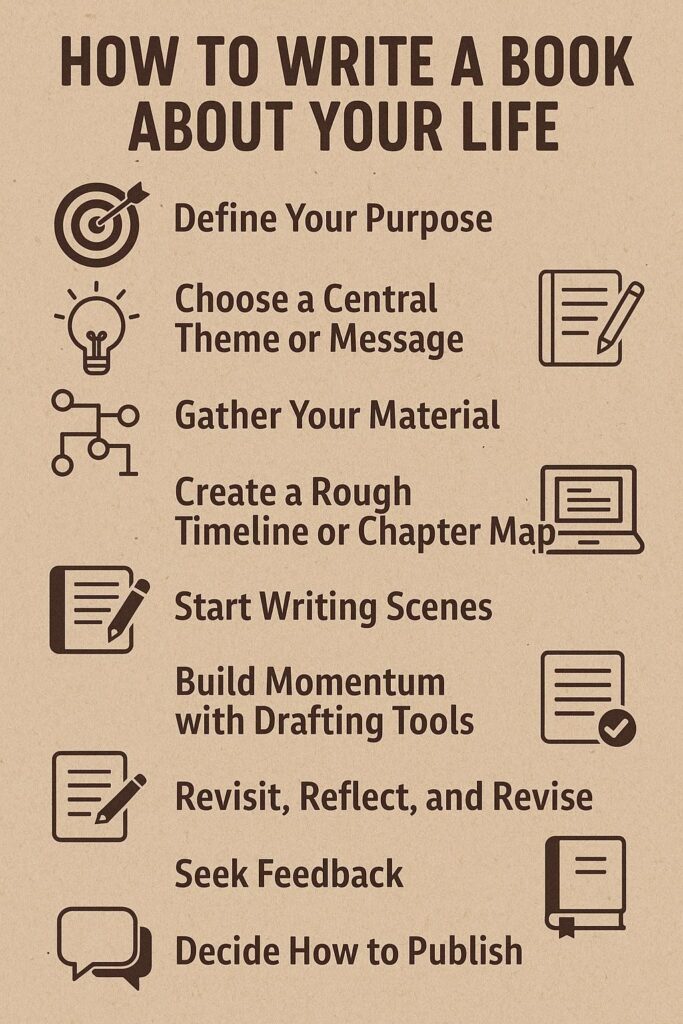
Bringing It Together
Writing your life into a book is not about capturing every detail. It’s about meaning. Each step, from defining your purpose to deciding on publishing, is a way to carve clarity from chaos. It’s about choosing the shape your story will take, gathering your raw material, and slowly, patiently, transforming it into something that reflects who you are and what you’ve lived.
If you’ve ever wondered how to write a book about your life, remember this: you don’t need to be a literary genius. You don’t need perfect grammar or flawless memory. What you need is willingness. A willingness to start, to stumble, to keep going.
When the doubts whisper that nobody cares, push back. People care. Your story has the power to move, to teach, to comfort. And even if you never publish, writing it will change you.
This is not just about writing a biography or a memoir. It’s about creating a legacy of meaning. One sentence at a time.
Latest Literary and Digital Tools to Use
Writing your life story becomes much easier when you use the right tools. Instead of feeling lost in piles of notes or drafts, these tools help you stay organized, inspired, and productive. Here’s a breakdown of some of the best ones and how they can help.
AI-assisted Tools
- ChatGPT: Great for brainstorming ideas, creating prompts, or helping you get unstuck when you don’t know what to write next.
- Sudowrite: Built for creative writers. It can suggest richer details, expand your descriptions, or shift the tone of a scene.
Why it helps: AI tools give you fresh ideas and support, while still leaving the story in your voice.
Scrivener and Notion
- Scrivener: A powerful program for big writing projects. You can:
- Create chapters as note cards
- Rearrange them easily
- Store research, drafts, and images in one place
- Notion: A flexible digital workspace. You can:
- Keep notes
- Track your writing progress
- Map themes or timelines
Why it helps: Both tools make it simple to manage large amounts of material without getting overwhelmed.
Otter.ai
- Records conversations and voice notes
- Automatically transcribes them into text
- Perfect for interviews with family or recording your own reflections on the go
Why it helps: You capture details you might forget and save hours of typing.
Canva
- Easy drag-and-drop design tool
- Ready-made templates for book covers and social media graphics
- Lets you customise colours, fonts, and layouts
Why it helps: You can create a professional-looking cover and marketing visuals without hiring a designer.
Campfire and Milanote
- Campfire: Lets you map timelines and character arcs visually
- Milanote: A digital pinboard where you can arrange notes, images, and ideas
Why it helps: If you think visually, these tools help you see your life events laid out in a clear way.
Whether you’re working solo or with editors through paid biography ghostwriters, these tools can keep you focused, inspired, and in control of your project. They take away the chaos, leaving you more room to write from the heart.

Common Challenges and How to Overcome Them
Writing about your life is exciting, but it is also challenging. Many people start strong and then hit walls of doubt, fear, or exhaustion. That is normal. Every writer, even seasoned authors, faces obstacles. The key is not avoiding them but learning how to move through them. Here are the most common challenges you might face and practical ways to overcome them.
“I don’t remember enough.”
Memory can be tricky. Details fade, timelines blur, and it can feel impossible to reconstruct certain periods of your life.
How to overcome it:
- Use prompts like “I remember…” or “The moment I realized…” to spark memories.
- Look through old photos, diaries, letters, or even social media posts. They often bring forgotten moments back.
- Talk with friends or family members who shared those times with you. Their memories can fill in the gaps and sometimes add fresh perspectives.
“I’m scared to share personal things.”
Fear of exposure is one of the biggest hurdles. You may worry about judgement or about revealing too much.
How to overcome it:
- Remind yourself that your first draft is private. You decide later what to share publicly.
- Write with honesty, then edit with caution. You can always change names, adjust details, or remove sections that feel too raw.
- Focus on your purpose. If your goal is healing or helping others, let that intention guide your courage.
“I get overwhelmed.”
Looking at an entire life and imagining it as a book can feel impossible. Where do you even begin?
How to overcome it:
- Break the task into small steps. Write one scene, one chapter, one memory at a time.
- Use techniques like the Pomodoro method: write for 25 minutes, rest for 5, then continue.
- Celebrate small wins. Finishing a single page is progress worth noticing.
“What if people get hurt?”
You may worry about how others will react, especially if your story involves sensitive relationships.
How to overcome it:
- Be clear on your intentions. Are you writing to hurt, or to heal?
- Change names or identifying details where needed.
- Talk to people involved if you feel comfortable, but remember it’s your story too.
“What if I’m not a good writer?”
Self-doubt is powerful. Many people abandon their projects because they believe they lack the skill.
How to overcome it:
- Writing skill improves with practice. Nobody writes a masterpiece on the first try.
- Use editing tools or hire professional support if needed.
- Remember: the heart of the book is your story, not perfect grammar.
Writing about your life will bring challenges, but each one is part of the process. If you ever feel lost, come back to your reason for starting. Remind yourself why you wanted to learn how to write a book about your life in the first place. That purpose is what will carry you through doubts and keep you writing until the end.
If you’re looking to hire a writer to write your memoir, feel free to get in touch.
Frequently Asked Questions
Q1: How long should a book about my life be?
Most memoirs fall between 50,000 and 80,000 words. That is long enough to dive deep into themes and stories, but not so long that readers lose focus. Personal essays can be much shorter, sometimes only 1,000 words. The focus should always be on meaning, not word count.
Q2: Do I need to write book about my life in chronological order?
No. Many powerful life stories use non-linear structures. You can weave flashbacks into the present, or group chapters by theme instead of time. What matters most is emotional clarity, not strict sequence.
Q3: What if I’m not a natural writer?
You don’t need to be. Writing is a skill you build as you go. Modern tools like Grammarly or Hemingway Editor can help polish your text, and editors can refine your manuscript later. What matters is capturing your story. The technical polish can come afterwards.
Q4: Can I write if my life is still unfolding?
Absolutely. Most people focus on a chapter of their life, not the whole thing. If you have lived through a meaningful journey or transition, that alone can be the heart of your book. You can always write another volume later.
Q5: Should I include painful or controversial topics in my biography?
Only if you are ready. Writing can be therapeutic, but publishing is another step. You have the right to protect yourself and others. Be honest in your writing, but decide carefully what belongs in the final version.
Q6: How do I know where to start my biography?
Start with the moment that feels alive to you right now. It doesn’t need to be the beginning of your life. Sometimes the middle or even the end carries the most energy. Once you begin, the rest will unfold more naturally.
Conclusion: Your Life Story Is Worth Writing
At the heart of it, writing your story is about more than memory. It is about capturing what you have lived, what you have felt, and what you have learned, then giving it shape so that it can live beyond you. Some people write for healing, some for legacy, others to inspire or simply to create. Whatever your reason, the act of putting your life into words will change you.
You might doubt yourself, wonder if anyone cares, or fear that your writing will not be good enough. Those thoughts are normal. Push through them. What matters is not perfection but honesty. When you write from truth, readers will feel it. If you’ve been waiting for a sign on how to write a book about your life, this is it. Begin. One scene, one memory, one page at a time. Your story matters. And the world needs it.

